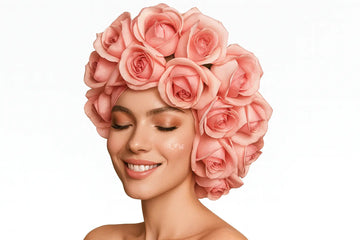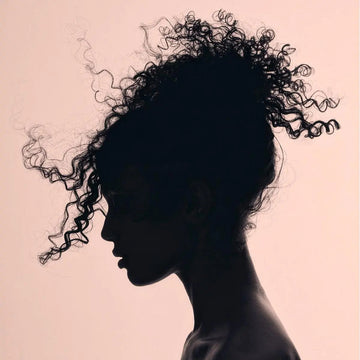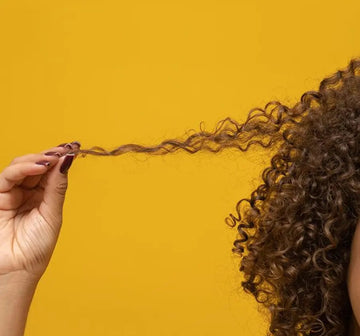Benefits of Sleeping in a Bonnet: How to Wear a Satin Bonnet the Right Way
vid X.Ruochen på Aug 19, 2025

Is Your Satin Bonnet Actually Helping Your Hair?
If your bonnet slips off, flattens your volume, or rubs your edges, you’re not alone. The good news: small changes in fit, fabric, and how you tuck your hair can make a big difference. Below you’ll find science-backed guidance (friction, moisture, airflow) and step-by-step wear tips for different hair types and lengths. We’ll also show where a Yanibest Butter Satin Bonnet fits in when you want low-friction glide with breathable comfort.

Quick Tips for Wearing a Satin Bonnet
- Protect your edges: Keep smooth satin/silk against the hairline; avoid cotton bindings. Flip any non-satin edge outwards.
- Keep volume: “Pineapple” or a loose top bun/twist before you put the bonnet on.
- Stop slips: Choose tie-band or drawstring bonnets; anchor with a soft sleep mask or wide headband if needed.
- Run hot? Pick lighter, air-permeable weaves (silk/satin) and avoid stacking layers in summer [1–3].

1) Protect Your Hairline: How to Wear a Bonnet to Prevent Breakage
Why edges break: Hair fibers wear down from friction. Fabrics with higher friction (e.g., cotton) create more drag on cuticles; lower-friction satins and silk glide more easily, reducing mechanical damage [1][4].
How to wear:
- Satin/silk to skin: Make sure the smooth side faces in. If your bonnet has cotton binding, flip it outward so only smooth fabric touches your edges.
- Go double-layer: A satin-lined interior keeps glide consistent even if the outer layer shifts.
- Mind the tension: Use adjustable bands or ties so it’s secure but not tight.
- Edge buffer: Wrap a thin satin scarf over your hairline before putting on the bonnet for extra protection.
Yanibest Advantage: The Yanibest Butter Satin Bonnet solves the “elastic marks” problem with a wide, stretchy, skin-friendly band (2.8" wide, 58" long, stretchable to 75") that you can wrap, adjust, and tie so it stays on all night without pulling your edges. Its double-layer satin construction ensures that the smooth, low-friction surface stays in contact with your hair at all times—even if the outer layer shifts while you sleep—helping reduce mechanical wear and lock in moisture more effectively than single-layer designs [1][4].

2) Keep Your Shape: Fix Flat Roots and Morning “Hat Hair”
Why volume collapses: Hair bunched at the back gets compressed between your head and pillow, flattening curls or waves.
How to wear a satin bonnet for different hair goals:
- Max volume (curls/waves): Pineapple or a loose top twist, then lean forward and pull the bonnet on so hair sits high in the cap.
- Minimal texture stretch (coils/braids/locs): Two loose braids/twists help prevent shifting that pushes the cap off.
- Straight/fine hair: A soft top bun with a no-dent tie preserves lift.
Yanibest Advantage: Its deep, roomy cap gives your style space to sit naturally without compression, while the Butter Satin interior glides over strands, locking in up to 30% more moisture overnight.
3) Stop the Slips: Bonnets That Actually Stay On
Why bonnets fall off: Too shallow caps, slippery bands, or heavy hair volume.
How to fix:
● Right closure: Tie-band or drawstring styles let you fine-tune tension.
● Extra-deep caps: Prevent hair from “popping” the bonnet off.
● Gentle anchors: Add a sleep mask or wide headband over the bonnet band.
Yanibest Advantage: The long wrap-around tie design grips securely without digging in. You can style the tie as a bow at the front or side for a fashionable twist—great for both bedtime and daytime wear.

4) Satin Bonnet vs. Silk Pillowcase: Do You Need Both?
Short answer: You don’t have to choose—using both together can maximize benefits.
A silk or satin pillowcase reduces friction and moisture loss, while a satin bonnet keeps styles in place for curls, braids, silk presses, or blowouts. Together, they create multiple protection that helps maintain smoothness, hydration, and style from every angle.
Hot sleepers: In summer, use one or the other to avoid heat buildup. Silk and breathable satins regulate temperature better than many synthetics [2][3][5].
5) Run Hot? Improve Breathability Without Sacrificing Protection
What to change:
- Pick lighter, air-permeable weaves (silk or breathable satin).
- Go single-layer in summer.
- Loosen bands slightly for airflow.
Yanibest Advantage: Made from breathable satin with no heavy foam linings, the Butter Satin Bonnet keeps you cool while still protecting your hair. For even lighter wear, our Breeze Satin Bonnet combines a breathable outer layer with a Butter Satin lining—offering airy comfort on the outside and smooth, hair-safe protection on the inside.
6) Step-by-Step: The “No-Fail” Bonnet Routine
- Detangle dry with fingers or a wide-tooth comb.
- Set the shape (pineapple, top bun, or loose twists).
- Edge guard (optional) with a satin scarf.
- Put bonnet on: Lean forward, gather hair to the forehead, seat bonnet back-to-front.
- Adjust & anchor: Tie/drawstring to comfort; add headband if you move a lot.
- Morning refresh: Shake out, mist lightly, and style.
Frequently Asked Questions
Q1. Should the shiny side face in?
Normally yes—but with Yanibest double-layer Butter Satin Bonnet, both sides are smooth, so it works either way.
Q2. Can tight bands cause thinning?
Yes, over-tightening + friction can damage edges [1][4].
Q3. Do I need a satin bonnet if I use a silk pillowcase?
For style hold, yes; for basic friction control, pillowcase may be enough [2][3][5].
Q4. What’s special about Yanibest Butter Satin?
It’s a proprietary satin weave for silk-like glide, breathable comfort, and adjustable fit—perfect if standard bonnets slip or feel too hot.
More on Satin Bonnet Care & Styling
- Is a Bonnet Bad for Your Hair? Learn the History of Bonnets → What Is a Satin Bonnet? History, Origins, and How It Evolved into a Hair Care Essential
- Benefits of Sleeping in a Bonnet and How to Wear a Bonnet for Sleep → Benefits of Sleeping in a Bonnet: How to Wear a Satin Bonnet the Right Way
- Can Wet Hair Go in a Bonnet for Sleeping → Can I Sleep in a Satin Bonnet with Wet Hair? Expert Guide to Satin Sleep Caps & Healthy Hair
- Compare Silk and Satin Bonnet for Hair Protection → Satin Bonnet vs. Silk Bonnet: Why Yanibest Butter Satin Wins for All Hair Types
- How to Wash Your Satin Bonnet → Expert Advice on Satin Bonnet Care: How to Wash and Protect It for Long-Term Use
Discover Yanibest Butter Satin Bonnet Collection and find the style that works best for you—because great hair starts with the care you sleep in.
References
[1] Al-Osaimy, A. S., M. K. Mohamed, and W. Y. Ali. “Friction Coefficient and Electrostatic Charge of Head Scarf Textiles.” Journal of the Egyptian Society of Tribology 9, no. 3 (2012): 24–39. https://journals.ekb.eg/article_80884.html
[2] Konda, Arvind, Abhinav Prakash, Gregory A. Moss, and Linsey C. Marr. “Aerosol Filtration Efficiency of Common Fabrics Used in Respiratory Cloth Masks.” ACS Nano 14, no. 5 (2020): 6339–47. https://doi.org/10.1021/acsnano.0c03252
[3] Zhao, M., L. Liao, W. Xiao, X. Yu, H. Wang, Q. Wang, and Y. Cui. “Household Materials Selection for Homemade Cloth Face Coverings and Their Filtration Efficiency Enhancement with Triboelectric Charging.” Nano Letters 20, no. 7 (2020): 5544–52. https://doi.org/10.1021/acs.nanolett.0c02211
[4] Bowen, James, Christophe A. Siviour, James J. Williams, Ian R. Hutchings, and Mark R. Pitts. “An Experimental Study of the Tribological Properties of Human Hair.” Author accepted manuscript, Open University Repository. https://oro.open.ac.uk/45976/1/2016-04-06%20Hair%20friction%20-%20manuscript%20-%20for%20ORO.pdf
[5] Mahar, Kishor, S. M. Hossain, and Zakaria Hossain. “Porosity–Air Permeability Relationship of Denim Fabrics.” Journal of Engineered Fibers and Fabrics 14 (2019): 1–8. https://kalaharijournals.com/resources/IJME_Vol7.1_467.pdf




